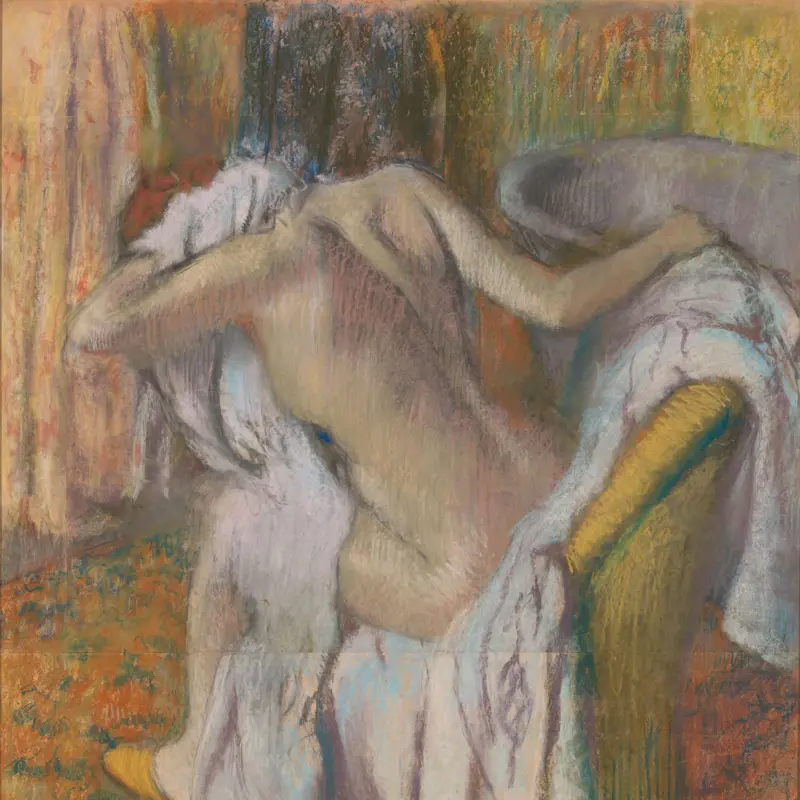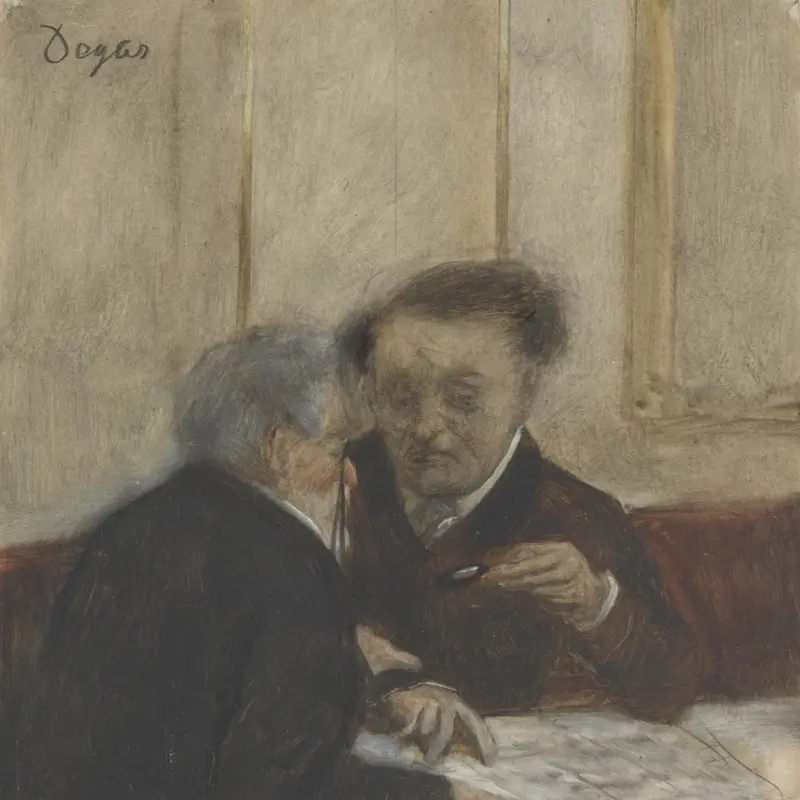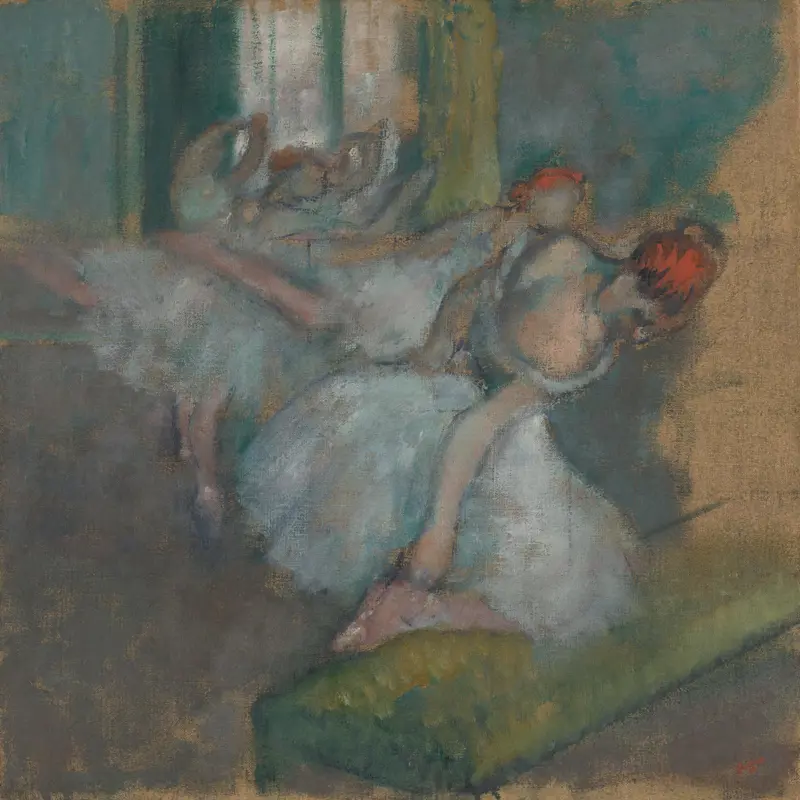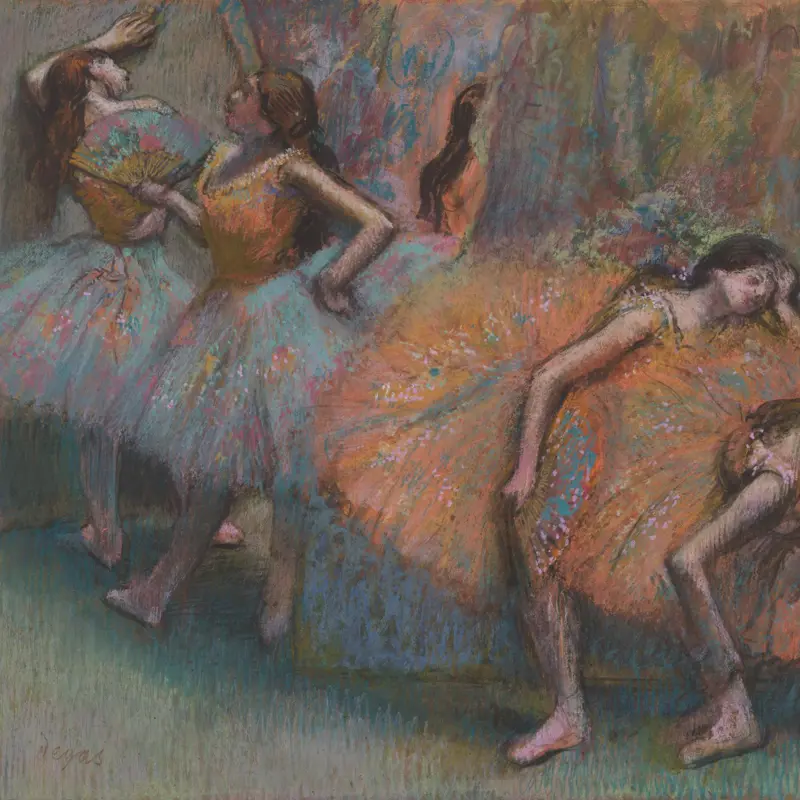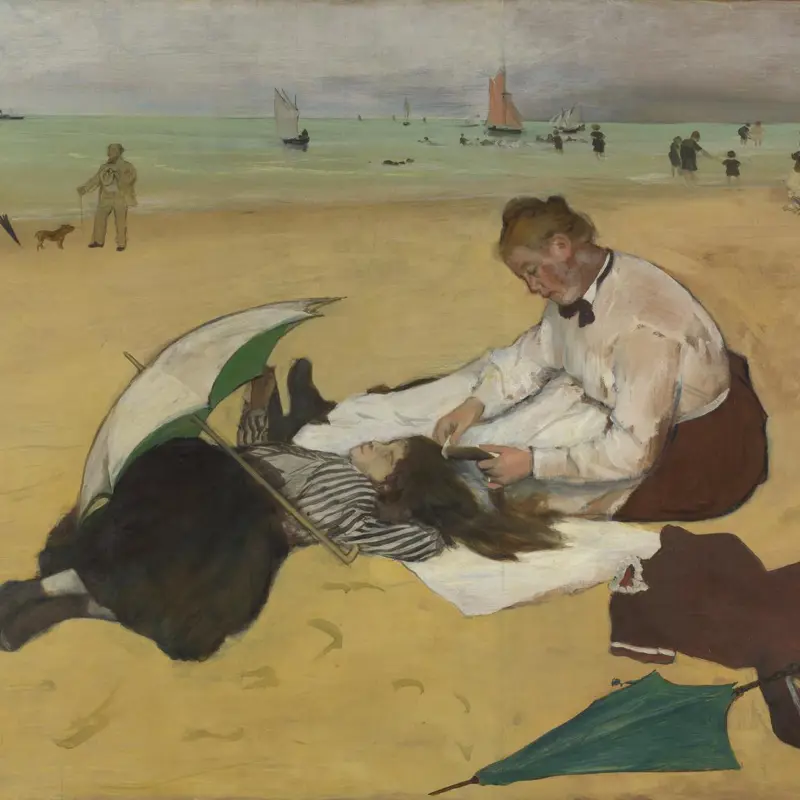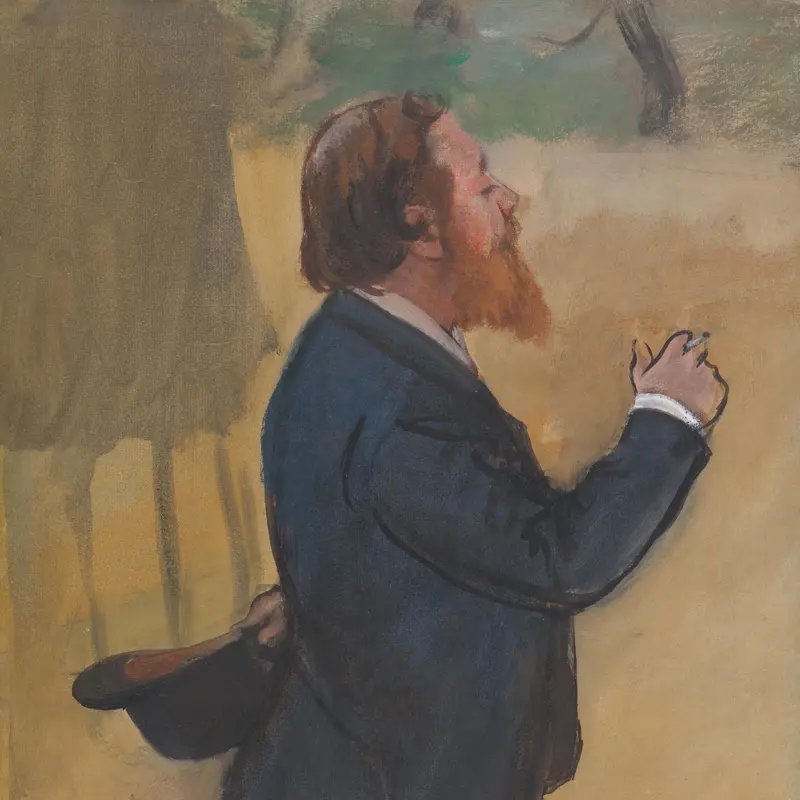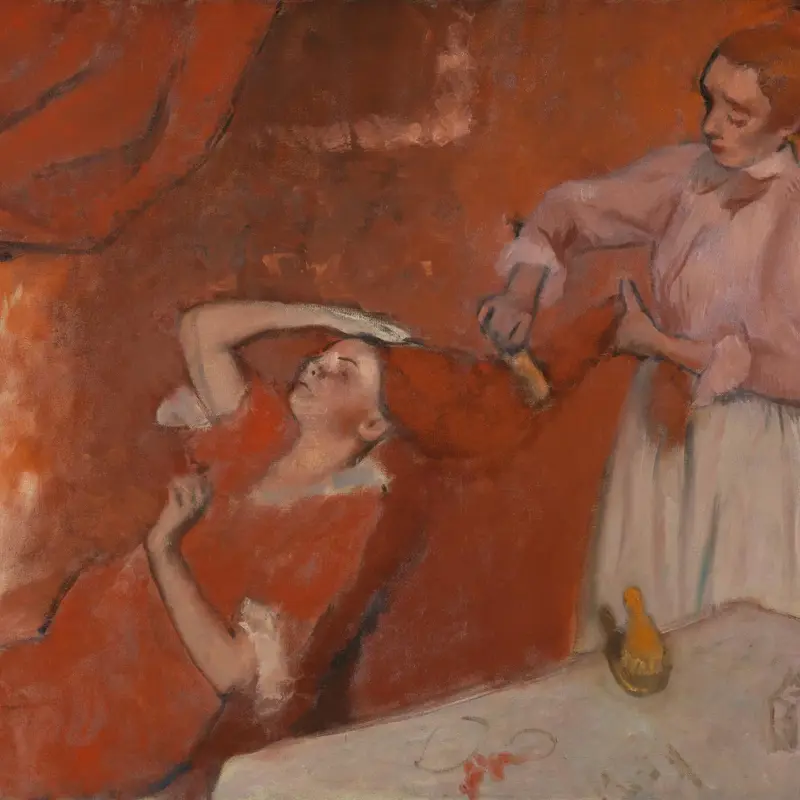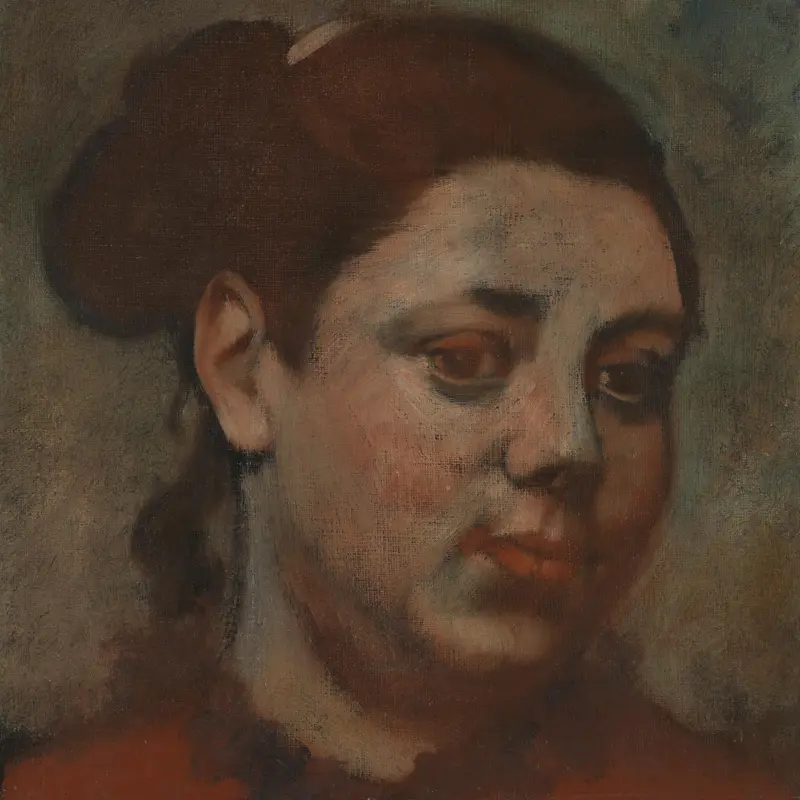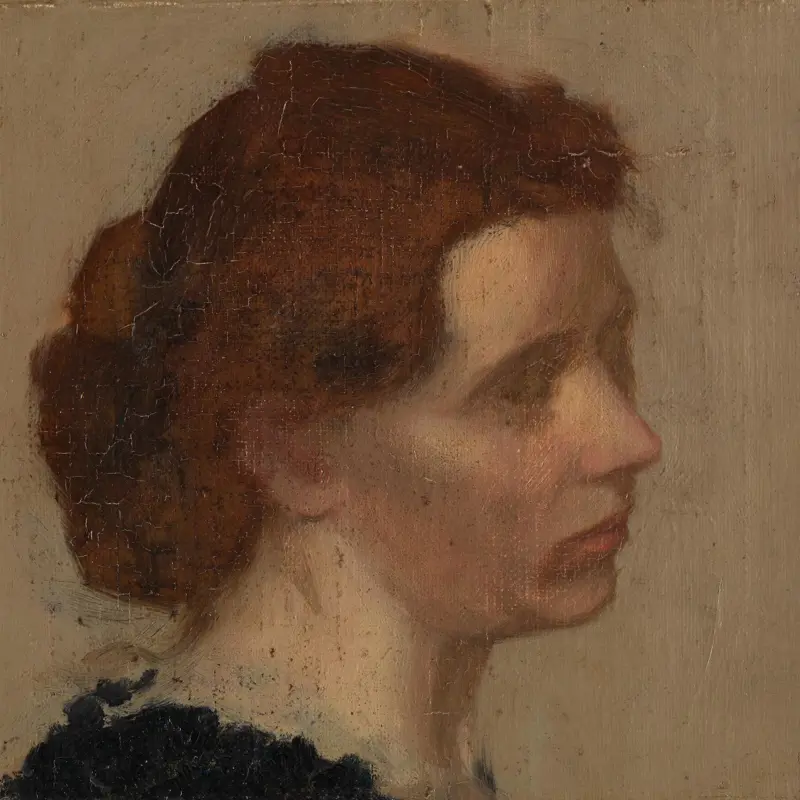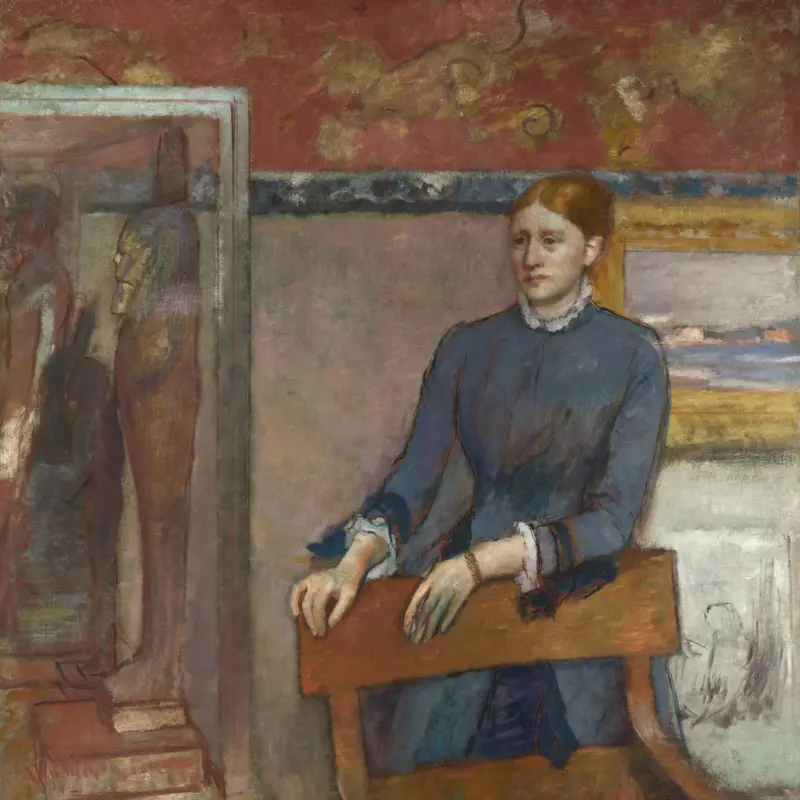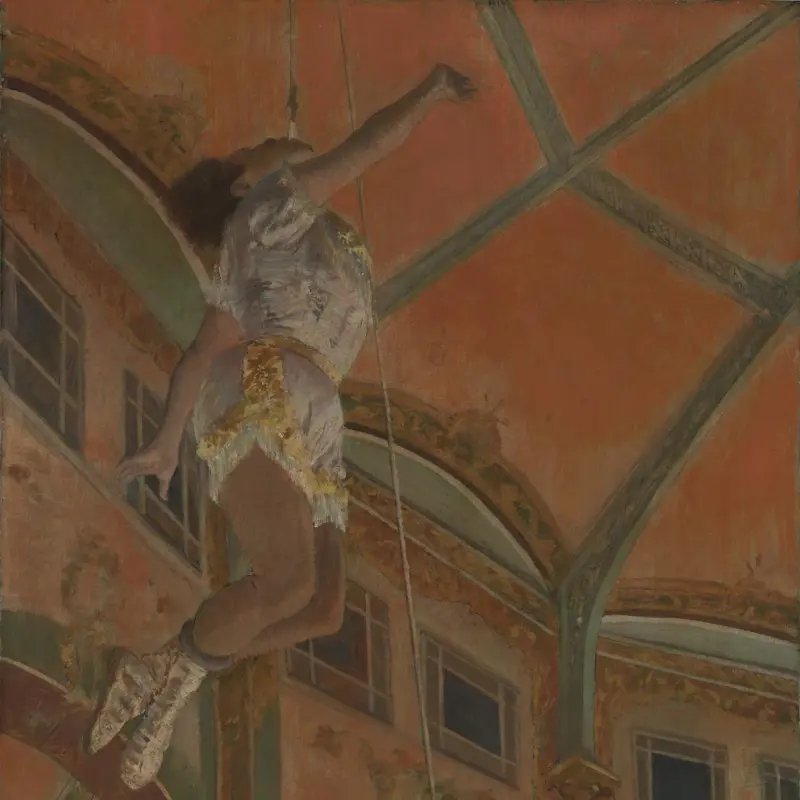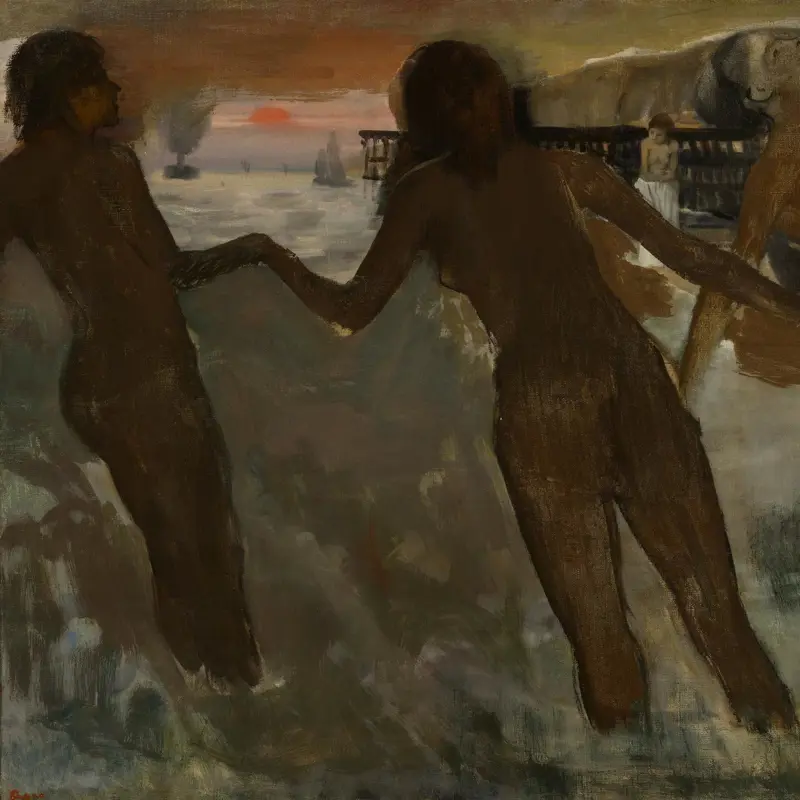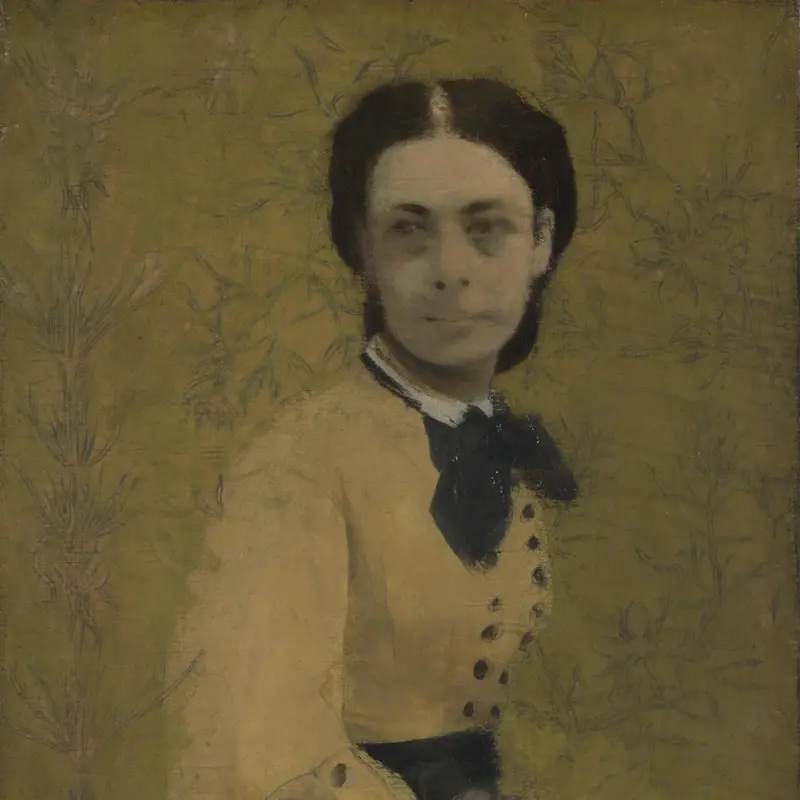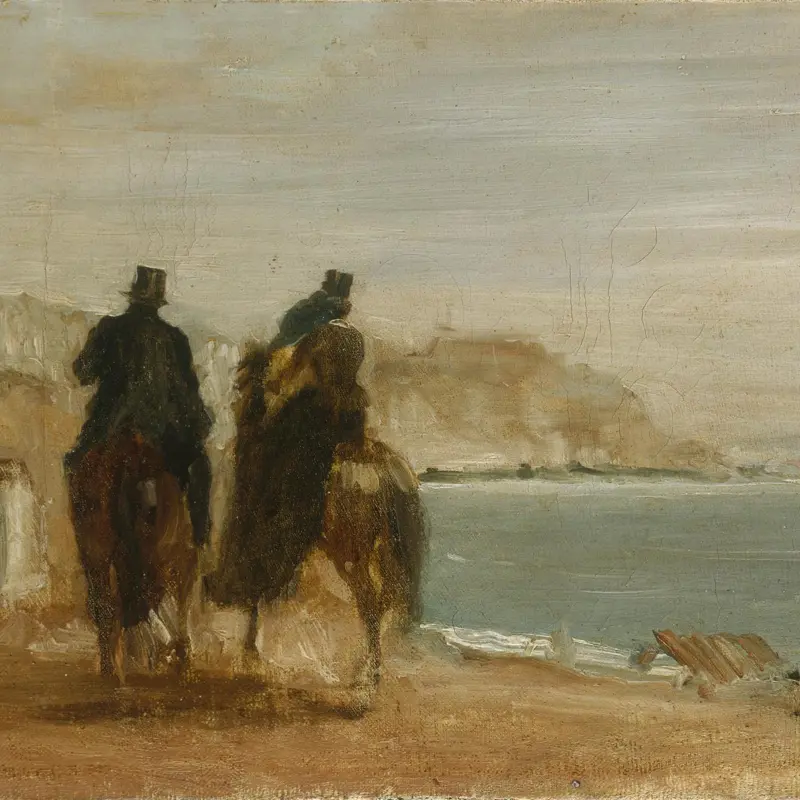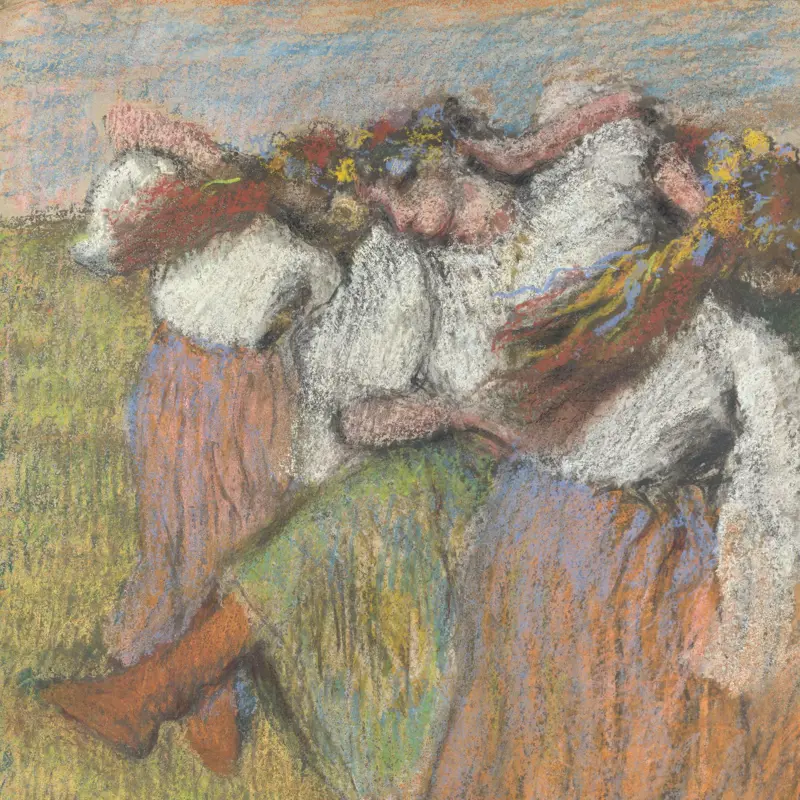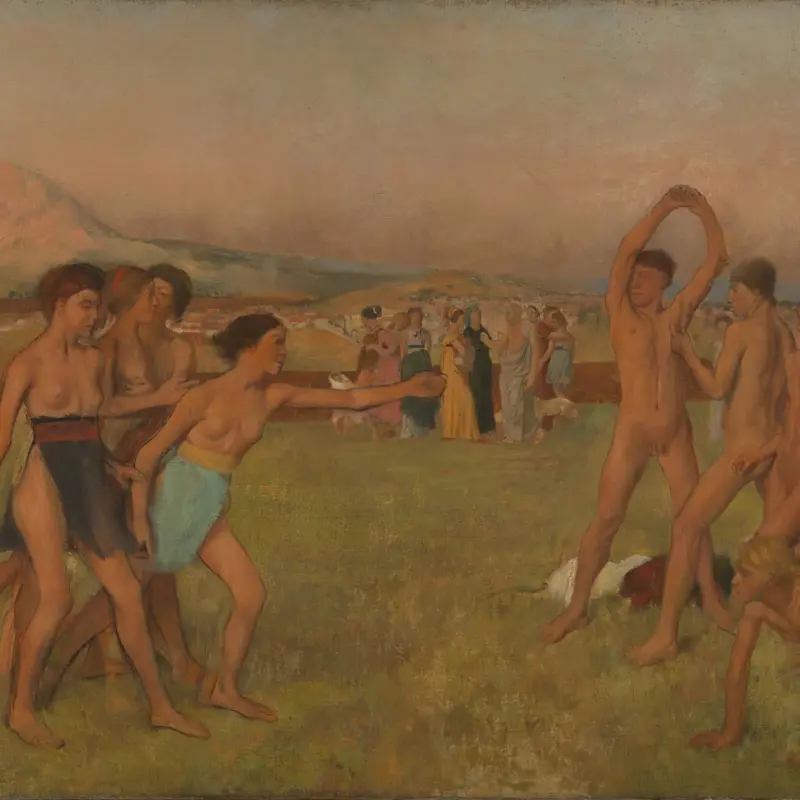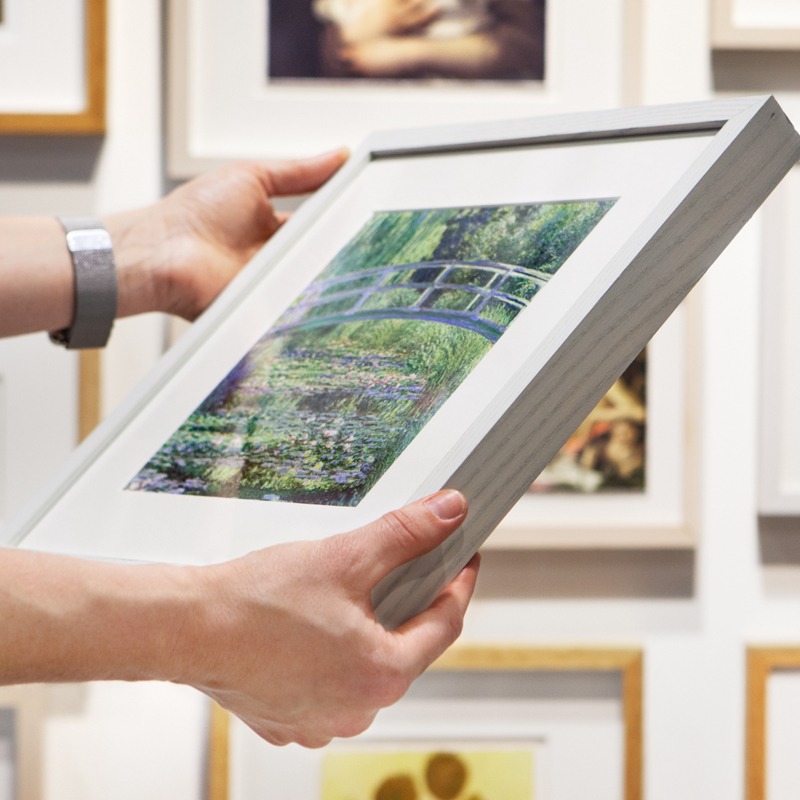Hilaire-Germain-Edgar Degas, 'Portrait of Elena Carafa', about 1875
About the work
Overview
Elena Carafa was Degas’s first cousin. Her mother, Stefanina, the Duchessa Montejasi-Cicerale, was the youngest sister of Degas’s father. Like many members of Degas’s family they lived in Naples, which Degas himself returned to in the winter of 1873–4, when he accompanied his dying father there. He was in Naples again in 1875 for the funeral of an uncle.
This portrait was either painted during one of these visits – being in mourning may explain Elena’s black dress – or when Elena was in Paris. Degas had previously painted Elena with her younger sister, Camilla, around 1865–8. In that portrait, she also looks directly at us.
Degas originally planned to show Elena facing towards the right, with a more pensive look. In the finished painting, he turned her face and upper body to the left so that she looks at us directly.
Key facts
Details
- Full title
- Portrait of Elena Carafa
- Artist
- Hilaire-Germain-Edgar Degas
- Artist dates
- 1834 - 1917
- Date made
- about 1875
- Medium and support
- oil on canvas
- Dimensions
- 70.1 × 55 cm
- Acquisition credit
- Bought, Courtauld Fund, 1926
- Inventory number
- NG4167
- Location
- Room 43
- Collection
- Main Collection
- Frame
- 19th-century French Frame
Provenance
Additional information
Text extracted from the ‘Provenance’ section of the catalogue entry in Martin Davies, with additions and some revisions by Cecil Gould, ‘National Gallery Catalogues: French School: Early 19th Century, Impressionists, Post-Impressionists, etc.’, London 1970 and supplemented by Isobel Muir; for further information, see the full catalogue entry.
Exhibition history
-
2016Painters' Paintings: From Freud to Van DyckThe National Gallery (London)23 June 2016 - 4 September 2016
-
2018Courtauld Impressionists: From Manet to CézanneThe National Gallery (London)17 September 2018 - 20 January 2019
Bibliography
-
1926R.R. Tatlock, 'The Courtauld Trust', The Burlington Magazine, XLVIII, 1926, pp. 56-65
-
1928M. Guérin, 'Portraits de famille peints par Degas', Gazette des beaux-arts, XVII, 1928, pp. 371-9
-
1932M. Guérin, 'Trois portraits de Degas offerts par la Société des Amis du Louvre', Bulletin des musées de France, 1932
-
1946P.-A. Lemoisne, Degas et son oeuvre, Paris 1946
-
1954D. Cooper, The Courtauld Collection: A Catalogue and Introduction, London 1954
-
1959R. Alley, Tate Gallery Catalogues: The Foreign Paintings, Drawings and Sculpture, London 1959
-
1962J.S. Boggs, Portraits by Degas, Berkeley 1962
-
1963J.S. Boggs, 'Edgar Degas and Naples', The Burlington Magazine, CV/723, 1963, pp. 273-6
-
1970Davies, Martin, and Cecil Gould, National Gallery Catalogues: French School: Early 19th Century, Impressionists, Post-Impressionists etc., London 1970
-
1974J. Lassaigne and F. Minervino, Tout l'oeuvre peint de Degas, Paris 1974
-
1986D. Sutton, Edgar Degas: Life and Work, New York 1986
-
1989R. Kendall, Degas: Images of Women (exh. cat. Tate Liverpool, 21 September - 31 December 1989), Liverpool 1989
-
1994F.A. Baumann, M. Karabelnik and J.S. Boggs, Degas: Portraits (exh. cat. Kunsthaus, 2 December 1994 - 5 March 1995), Zurich 1994
-
2001
C. Baker and T. Henry, The National Gallery: Complete Illustrated Catalogue, London 2001
About this record
If you know more about this work or have spotted an error, please contact us. Please note that exhibition histories are listed from 2009 onwards. Bibliographies may not be complete; more comprehensive information is available in the National Gallery Library.

